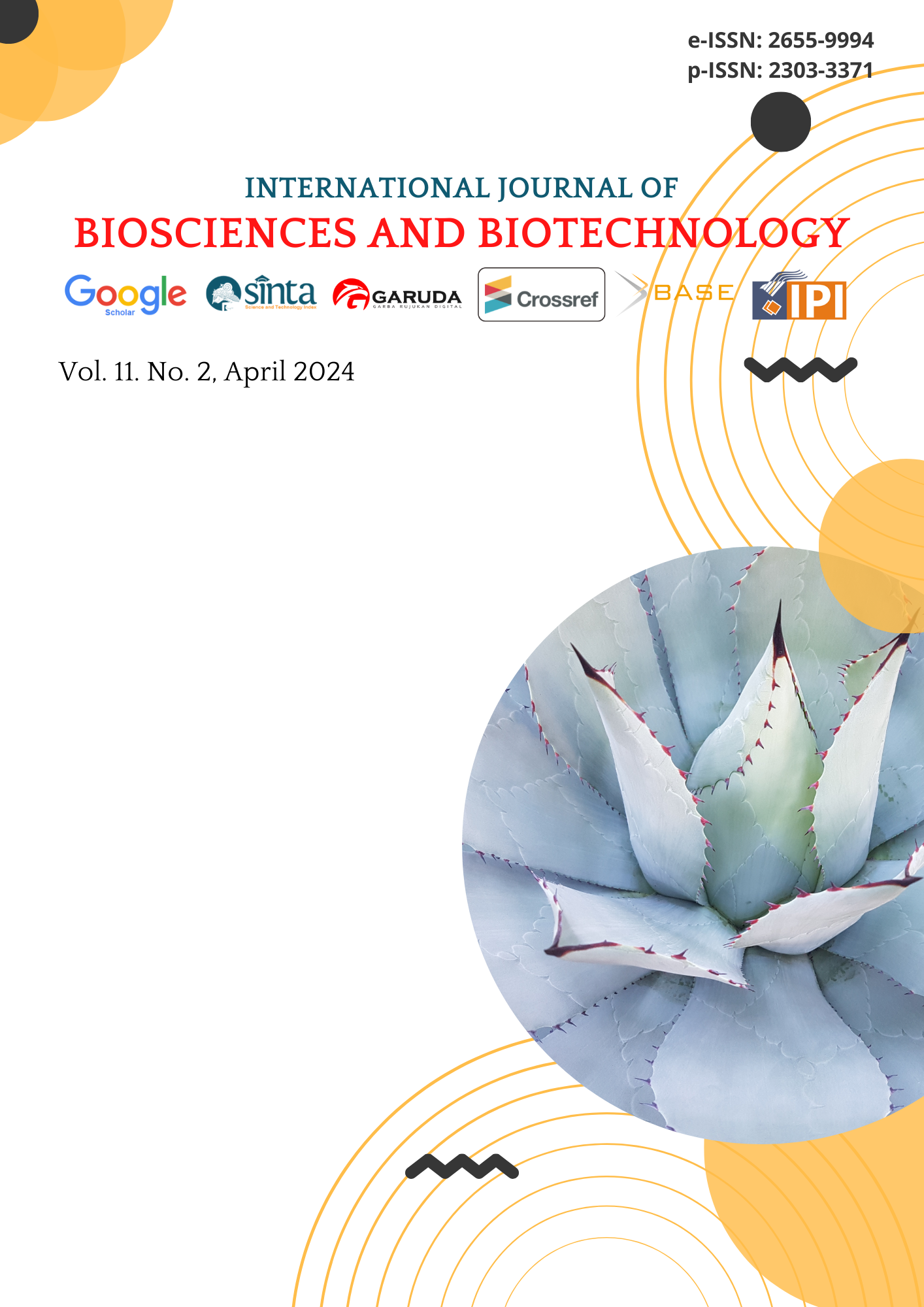Morphological Identification Characteristics of Basil (Ocimum spp.) in Tabanan Regency, Bali, Indonesia
Abstract
Basil (Ocimum spp.) is an aromatic plant and is the wealthiest essential oil-producing genera from the Lamiaceae family. Due to the various phytochemical compounds or secondary metabolites, Basil has the potential of medicinal plant germplasm as a source of biopharmaceuticals. Several types of Basil grow in Bali, especially in Tabanan Regency, but their morphological characteristics have yet to be identified. This study aims to identify the morphological characteristics of the four types of Basil found growing at that location: Kecarum, Selasih, Tulasi, and Ruku-ruku. This research was conducted by characterizing the characteristics of the parts of the basil plant, including the morphology of the crown (Botany), stem (Caulis), flowers (Flos), leaves (Folium), and fruit (Fructus). The results of the characterization showed that there were similarities between the four types of Basil and differences in crown shape, plant height, the direction of branch growth, type of branching, leaf shape, color (leaves, stems, flowers, fruit), leaf tips, and leaf layout. , and the base of the leaf. Based on the morphological identification, Kecarum and Selasih have similar morphology to Ocimum americanum L and Ocimum basillicum. Tulasi and Ruku-ruku are morphologically identical to Ocimum sanctum var. Rama (red holy basils) and Ocimum campechianum.
Keywords: Biopharmaceuticals, Basil, Lamiaceae, Morphology, Ocimum spp.
Downloads
References
Barbour, MG, Burk, JH, & Pitts, WD (1987). Terrestrial Plant Ecology. The Benjamin. Cummings, Menlo Park, California.
Cartono. (2005). Plant Ecology Practicum Guide. Bandung: Not published.
Ha, N. Y., Jeong, H., Son, J., Cha, M. R., Song, S., Hwang, J. H., & Kim, J. (2024). Preliminary investigation of a combined herbal extract of Aruncus dioicus, Cirsium nipponicum, and Ocimum basilicum for halitosis. Medicine, 103(7), e37061. https://doi.org/10.1097/MD.0000000000037061
Hamza, M. (2010). Morphology and Anatomical Study of Javanese Edelweiss (Anaphalis javanica) Leaves at Different Altitude Zones in Bromo Tengger Semeru National Park, East Java. Semarang: Thesis. The State Islamic University of Maulana Malik Ibrahim.
Idrus, M., Harismah, K., & Sriyanto, A. (2013). Utilization of Basil (Ocimum sanctum) as Aroma Substitution in Antioxidant Herbal Soap Making.
Indriyanto, MP (2012). Dendrology a Theory & Practice of Investigating Trees. Publisher of the University of Lampung Research Institute.
Jones, S.B and AE Luchsinger. (1986). Plant Systematics. 2nd ed. Mc. Graw-Hill Book Company. New York. Pp 1-11.
Jones, S.B and. AE Luchsinger. (1979). Plant Systematics. Mc. Graw-Hill Book Company. New York. Pp 44, 60-77.
Kumalasari, MLF, & Andiarna, F. (2020). Phytochemical test of ethanol extract of basil leaves (Ocimum basilicum L). Indonesian Journal for Health Sciences, 4(1), 39-44.
Kumar, A., Shukla, R., Singh, P., Prakash, B., & Dubey, NK (2011). The chemical composition of Ocimum basilicum L. essential oil and its efficacy as a preservative against fungal and aflatoxin contamination of dry fruits. International Journal of Food Science & Technology, 46(9), 1840-1846.
Nisa'ina A. (2015). The effect of basil leaf extract (Ocimum americanum L) on the quality of spermatozoa of mice (Mus musculus L) strain balb-c and its use as a popular scientific book. Thesis. Faculty of Teacher Training and Education, University of Jember.
Pollunin, N. (1990). Introduction to Plant Geography and Some Allied Sciences. Gadjah Mada University Press. Yogyakarta.
Prayitno, D. (2002). Medicinal Plants and Their Benefits. IP2TP, Yogyakarta.
Roy, D. (2000). Plant Breeding: Analysis and Exploitation of Variation. Narosa Publishing House, Calcutta.
Tangpao, T., Charoimek, N., Teerakitchotikan, P., Leksawasdi, N., Jantanasakulwong, K., Rachtanapun, P., & Sommano, SR (2022). Volatile Organic Compounds from Basil Essential Oils: Plant Taxonomy, Biological Activities, and Their Applications in Tropical Fruit Productions. Horticulture, 8(2), 144.
Tjitrosoepomo, G. (2009). Plant Morphology. Yogyakarta: Gadjah Mada University Press.






